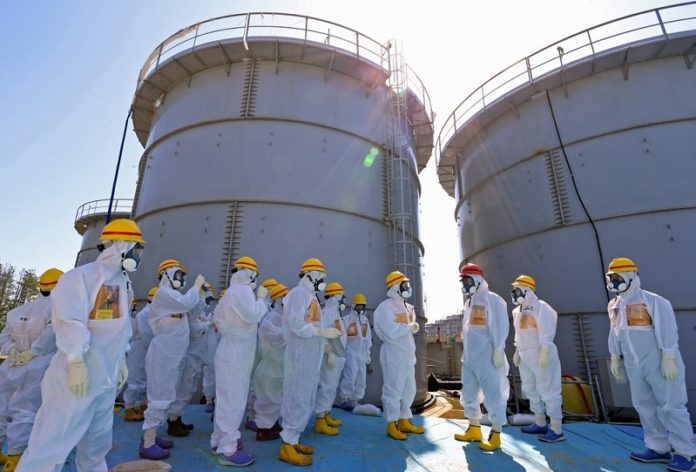
Man does the math: Canadian govt inflates “safe” dosage radioactive substances in water to 7 MILLION Bacquerels per cubic meter in order to assure citizens that the water is safe, despite “trace” radioactive substances being found off of the BC shore– sent via the ocean current from far-away Fukushima, Japan. It should be noted that CBCNews claims that this is the “first time” such radiation has been detected in North America, but Global Research had reported on this way back in 2013, and this recent “expert” being quoted is likely just there to make soothing noises.
Anyway, according to the Canadian Govt, the Maximum Acceptable Concentrations for radioactive substances in water are: Total uraniumTable a footnote10.02 mg/LTritium (3H)7000 Bq/LLead-210 (210Pb)0.2 Bq/LTable a footnote2Strontium-90 (90Sr)5 Bq/LRadium-226 (226Ra)0.5 Bq/LIodine-131 (131I)6 Bq/L Cesium-137 (137Cs)10 Bq/L.
Simply multiply each number by a thousand to get cubic meters.
It should be noted that the Ontario Drinking Water Advisory Council had released a report recommending that the maximum levels for Trithium be reduced from 7000 to 20 becquerels per litre.
According to the Canadian Nuclear Safety Commission’s own write-up: “Tritium is a radioactive form of hydrogen. It emits very low-energy beta radiation, which is blocked by common materials such as sheets of plastic, glass or metal, and cannot penetrate the top layer of human skin. Tritium may be absorbed into the body through the skin or when ingested through water or food, or when inhaled.
Tritium is a naturally occurring radioactive substance, which is formed in the upper atmosphere due to the continuous bombardment of atmospheric gases by high energy cosmic rays. In Canada, natural tritium levels vary between 0.2 and 1.4 Bq/L, depending on geographical location and other factors.
Tritium is also present in the environment as a result of atmospheric nuclear weapons testing in the 1950s and 1960s. Since then, these concentrations have steadily declined and are now ranging from 2 to 3 Bq/L across Canada.
Nuclear reactors and tritium processing facilities are also sources of controlled releases of tritium.” By the way, the Chernobyl and Fukushima meltdowns let loose plenty of tritium, but so have a seemingly endless series of leaks at aging reactors in the U.S. and elsewhere.
So, why the 7000 Bq/L limit in water? Is the Canadian govt aware of something? This is of grave concern because water is, duh, ingested.
This Article is free and open source. You have permission to republish this article under a Creative Commons license with attribution to the author and AnonHQ.com.





This guy in the video does not know anything about radioactivity.
https://www.youtube.com/watch?v=d2PxY-wOrI8